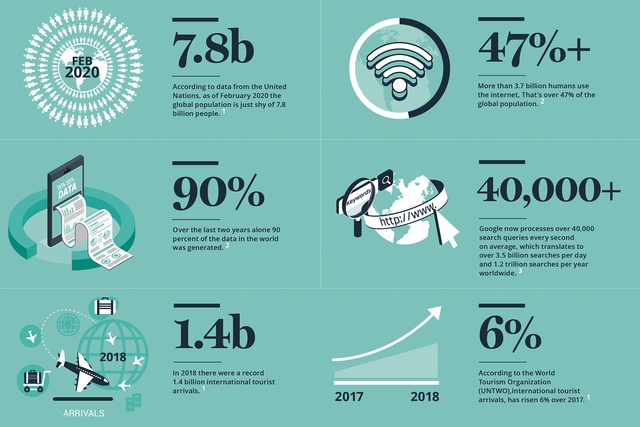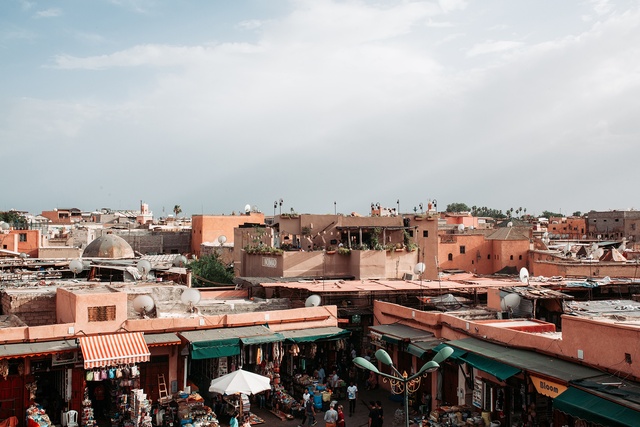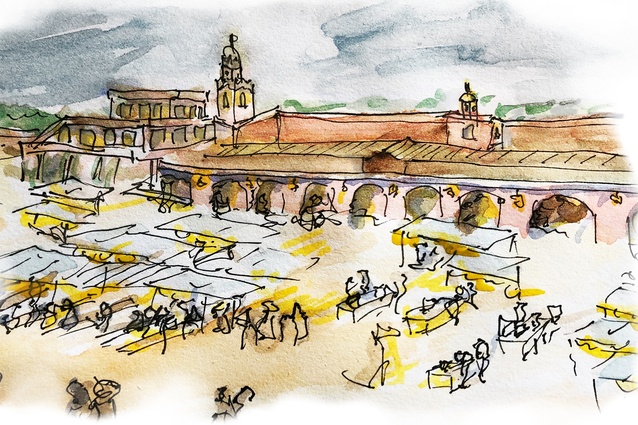2020 Vision: The socially responsible decade
In this new column, 2020 Vision: The Socially Responsible Decade, architect Audrey de Filippis explores the increasing awareness of global citizenry and shared value and responsibility, including the role of design as we enter a new decade. Discussion on topics like concerns around climate change and resiliency, political instability and social inequality, wellness and mental health, technology and human impacts, and population growth and mobility will all have a monumental influence to the way we approach design for the years to come. The intent of the column is to encourage a dialogue as we navigate this next decade of design, ideally leaving our world in a better state at the beginning of 2030 than we entered it at this decade.
In the first of the series, Audrey explores how mobility and adaptability of a growing global population impact the way we use, design, and re-imagine existing environments. She challenges the role of the design professional within a complicated web of human interaction and the growing impact of social technology within this.

I recently returned from a trip to Marrakesh, and as I reflect on my experience of discovering the city, what sticks in my mind is the buzz of activity that occurs naturally within the in-between spaces of the Medina. No street or alley is too narrow to activate, with vendors selling to tourists and locals alike. Fruit, veg, pastries, and prepared food are on display alongside pottery and leather goods, while at the same time neighbours gather on stools to catch up on their day over a mint tea. The streets are vibrant and full of life within an urban realm that has been modified very little over the last few hundred years.
The open space of Jamaa el Fna, the main plaza in the old city, offers a grand open space in the day, activated by retail at its edges with local juice vendors and artisans. Throughout the day the plaza is used as a main thoroughfare connecting the labyrinth of old Medina alleys to the large boulevards leading to newer colonial parts of town. In the evening the same area transforms itself into a bustling entertainment precinct filled with restaurants, casino, and performance venues. This transformation – led entirely and authentically by a human desire to convert a prominent space into a culturally responsive place – is a strong reminder that our role as designers is to facilitate the opportunity for the creation of place, rather than the expectation of curating the place itself.
For centuries, we have debated between the meaning of ‘space’ and ‘place’. The culmination of these views, in my opinion, being that ’space’ is merely a location; a concrete creation from a geographical standpoint, yet devoid of the human experience. ‘Place’, on the other hand, is an abstract living geography, activated by the human presence; natural and unprescribed in most cases. As architects and designers, our role bridges the gap in-between. We aspire to create ‘places’, yet our value lies in the creation of vessels to allow ‘places’ to take form.
We play a pivotal role in the creation of thriving social environments. As a species, we are exponentially increasing our reliance on technology and social media for our collective engagements, yet we are aware of how individual footprints can play a huge role in the health and wellness of our communities and planet. Creating surroundings that encourage and facilitate opportunities for equitable and communal interactions has become vitally important as we look to set out the framework for urban design that will accommodate our growing populations. If proactive, New Zealand—with a population of under 5 million—can address growth and design for density prior to feeling the impacts of the mass.

Data-driven worlds
Data has always been a powerful tool and access to it today has never been easier. I am a strong believer in the power of information and how this has a daily influence on creativity. Data is like a fingerprint of a specific event at a specific time. It changes constantly and provides the ability to quantify aspects of the human experience. So how does this instant information allow us to be better equipped to address current human social phenomena?
Let’s summarise a few more findings:
- As of December 2019, worldwide, there are over 2.5 billion monthly active Facebook users, with 1.66 billion of these people active on a daily basis. A 9 per cent increase year over year. (Source: Facebook)
- Over 300 million photos are uploaded to Facebook every day. (Source: Gizmodo)
- Every 60 seconds on Facebook: 510,000 comments are posted, 293,000 statuses are updated, and 136,000 photos are uploaded. (Source: The Social Skinny)
- In 2018 there were a record 1.4 billion international tourist arrivals, according to the World Tourism Organization (UNTWO), a rise of 6 per cent over 2017.
What does this mean? Our global population is close to 8 billion people and as shown from the statistics above, half of us have access to the internet. Over 18 per cent of that population is mobile, traveling across international borders. If this were to increase by another 6 per cent, we would be looking at an additional 500 million people moving around the globe. Users of Facebook and other social media platforms account for twice as many people who are global travellers. We have never in our history shared as much information with each other or searched for as many answers. We have never been as socially connected, both verbally and visually. We have never moved around the globe as frequently.
It is easy to forget the days where a phone, GPS, computer, calculator, and camera were all separate devices. We live in an insta-society, a mobile world, where a smartphone provides virtually all the essentials for survival. Multi-functionality has not only become the norm, but it has become the expectation. Our urban and built environments should deliver the same. Human mobility and adaptability are challenges to our industry. People are more mobile than ever and their expectations of the world around them are even higher. Even people who have never set foot outside their hometown are still exposed to the entire world via their devices.
We stay connected to each other in increasingly visual ways, through these mobile platforms. Today mobile apps are often designed prior to their traditional website interface, which means that as a human tribe we have transitioned to getting our information on the go, rather than in fixed seated positions in front of the “traditional” monitor. Have we adapted our design of spaces to accommodate this?

How can this influence design?
We should not forget that humans are also extremely adaptable. In fact, our survival as a species has been fully dependent on our ability to adapt to changes presented to us in our environment. Survival of the fittest does not simply mean the strongest; it also means the most willing to modify our current condition. Let’s take housing as an example. Over time, we have transitioned from societies of hunter-gathers, to farmers, to dense urbanity with the industrial revolution, sprawling suburbia with our quarter-acre dreams, and today a renewed energy to embrace our urban environments and growing populations.
I could list a series of public spaces and projects where urban designers, architects, and designers much like ourselves are re-inventing the traditional archetypes: thriving build-to-rent housing, reimagined co-housing, theatres pulled from the civic realm to the community, public markets reconceived, and office environments across the world redefined by co-work models and mobile working. Rather than review examples from this list, I would prefer to challenge us to consider and re-consider what adaptability in design should be as we move towards a flexible and socially relevant future.
If we continue to build spaces with one main use in mind, are we missing the mark? Mobile working has increased the demand on co-working offerings but has yet to greatly influence our open urban public areas. Have we changed the way we design homes and apartments to react to our mobile needs? Co-living and build-to-rent housing models are aimed at more equitable and social housing models, but how can they further ensure the longevity of our existing urban environments, rather than encourage us to continue to push further and further out of our cities?
The design of our environments should be culturally relevant as they relate to people (past, present, and future). Our spaces should be able to adapt to evolving social and mobile needs and re-envision the meaning of the creation of community. They should allow for natural human manipulation, re-invention, and moments of serendipity. We should allow them to be assigned their own meanings and transformed into ‘places’. We should design in a way that is as ecologically feasible as it is economically feasible. All our surroundings should have the ability for evolution into more than purpose and have more than one life, elongating the viability of the built environment.
The challenge for design is to be able to adapt; to be able to offer a new experience from one physical construct, time and time again. Humans are as creative as they are mobile. As I think back to my time in Marrakesh, I’m energised by the simplicity to it all—a natural way to let people inhabit their environments and to shape them to suit their needs, creating places to work, shop, eat, be well, socialise, and be entertained.
Audrey de Filippis is an associate director at Ignite Architects. She holds a Master of Architecture and MBA and has practiced architecture, design, and strategy in the United States, Europe, Australia, and New Zealand.










